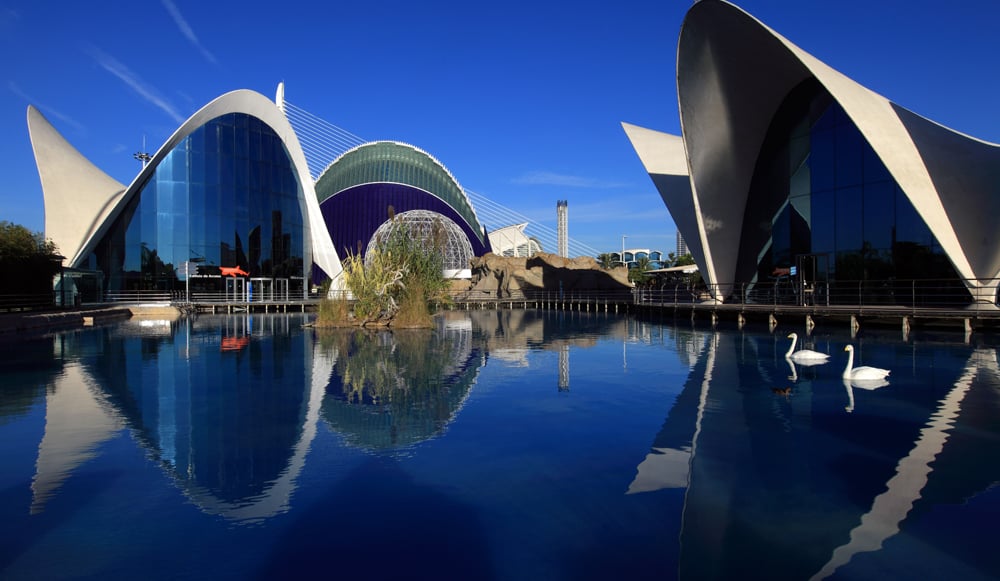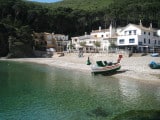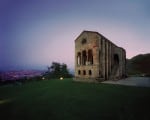Time travel seems almost possible for Niamh Mac Sweeney as she takes in three cities – Madrid, Cuenca and Valencia – aboard the Alta Velocidad Espanola high-speed train.
Swift, smooth, striking and sophisticated, if the Renfe AVE was an animal it would be a Peregrine Falcon. The fastest bird – and fastest animal on earth – the Peregrine soars to great heights then dives at speeds of over 300km/h. The AVE too travels at speeds of up to 310 km/h and glides along the tracks as if motionless.
Perched majestically on the tracks of the Puerta de Atocha in Madrid on the verge of certain, rapid transportation to Valencia’s Joaquín Sorolla station, the AVE (ave, meaning ‘bird’) is a fine feat of locomotive engineering. The AVE is to locomotion as the Concorde is to aviation, and more importantly, it is the lifeblood and gateway connecting all cities, coast and corners of Spain.
Whether your visit to Spain is for business or pleasure, the savvy traveller will find the AVE to be the fastest, cheapest and most convenient way to get around this vast and dynamic country. From city to coast, the high-speed train network will take you to cities including Madrid, Valencia, Seville, Malaga and Barcelona, with plenty of enticing pit stops along the way.
Travelling hundreds of kilometres at great speed, the high-tech trains that run from Madrid to Barcelona take 2½ hours, and with frequent departures running every half hour, there really couldn’t be an easier way to get from M-B. The Valencia to Madrid train takes 1½ hours, and with one train an hour, getting from one side of Spain to the other is as pleasant and plush as it is pain-free.
In a country as large and vast as España, this is indeed a good thing, and less time travelling equals more time soaking up the nature, culture, gastronomy and festivals that permeate across all regions of the spirited Spanish Kingdom.
And there’s plenty of choice too when it comes to choosing routes and journeys along the AVE network. We decided to take the Madrid to Levante line along a route that would take us from Madrid to Valencia, then Cuenca and back to Madrid again.
There were certainly no complaints as we journeyed at high-speed across the country. Our only minor grumble was having a train to catch, when really we wanted to stay longer in each of the three destinations.
Valencian vision
Dubs will be familiar with the architect Santiago Calatrava from his iconic cable-stayed Samuel Beckett Bridge, joining the south and north city at John Rogerson’s Quay and North Wall Quay respectively. Calatrava’s signature design is an architectural marvel of futuristic vision, but Valencia offers much more than the greatest example of modern architecture. Nature, sunny beaches, conference centres, heritage and culture steeped in 2,000 years of history, cathedrals, museums, award-winning food and wine – its easy to see why Spain’s third largest city is so attractive, not just for travellers and city breakers, but also for business tourists.
If you do nothing else while in Valencia, the City of Arts and Sciences is a must. This extensive science and cultural mecca is not just an epicentre for innovative and interactive scientific discovery, it is a unique multifunctional space. The avant-garde opera house – Palau de les Arts Reina Sofía – has seen many world renowned music concerts and operatic performances; the Oceanográfico is the largest aquarium in Europe with over 500 marine species; and the impressive l’Assut de l’Or bridge and the Agora – the main venue of the Valencia Open 500 tennis tournament – are all venues of architectural genius from Calatrava, but they are as much about design as they about the variety of art, culture and science encased inside.
Given that Spain’s signature dish – paella – originated in the region of Valencia lunch at La Cigrona Restaurant would not only satisfy our hunger for traditional paella, but would also offer some much needed ‘fuel’ for our sightseeing bicycle tour of the city.
Biking it is the easiest way to get around Valencia. We took a bike tour with Valencia Guias and discovered the real gems and spirit of the city. A unique metropolis, you can easily cycle from one side, through the Turia Gardens – a former riverbed – to the other. And although you know you’re in an urban space, you are equally immersed in nature. We took a 9km route, starting from Cabecera Park, taking in the many museums and monuments along the way.
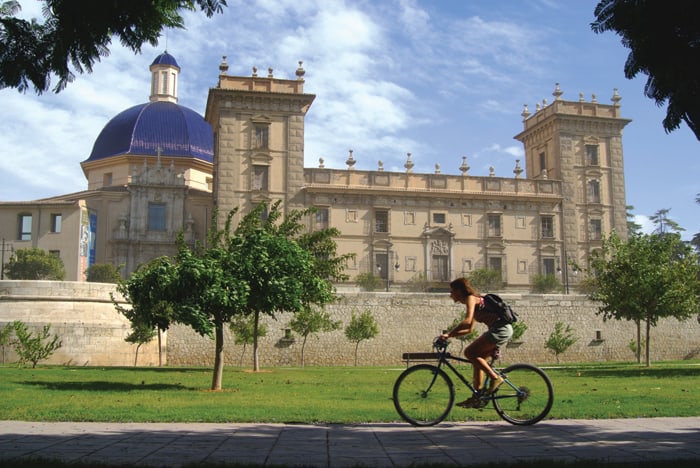
Museo de Bellas Artes, Valencia
The Mercado Central, situated inside a jewel of pre-modernist architecture, is one of Europe’s largest markets and is a stunning example of Gothic architecture. The Lonja de la Seda – declared an Intangible Cultural Heritage site by UNESCO – the Plaza de la Virgen, the cathedral quarter, the Micalet, the Basilica of the Virgin, Barrio del Carmen, the mediaeval gates of the Serrano and Quart, and the Almoina; are all ancient monuments distinctive to whether they were built on the Islamic or Christian side of the wall from which the city grew. A wander through these labyrinthine cobbled streets transports you back to another time and are indicative of Valencian character, where old and new blend with seamless ease.
Dinner that evening at El Coso restaurant, on the lively Malvarrosa beach promenade, gave us the chance to see all the Marina Real Juan Carlos has to offer – and it has plenty. The harbour hosts yacht races, while the marina itself is surrounded by the Formula1 circuit, the modernist Veles & Vents, and is the base for sailing teams in the America’s Cup.
Staying in the Eurostar’s Gran Valencia, we get to glimpse the future. The hotel is in a prosperous area of Valencia. Under expansion, the two main focal points of the Benicalap district are the Congress Hall and the Nou Mestalla football stadium, which, with a capacity of 75,000, is set to be one of the most modern stadiums in Spain when completed.
These labyrinthine cobbled streets transports you back to another time and history and are indicative of Valencian character, where old and new blend with seamless ease.”
While Valencia as a city has everything a discerning traveller would anticipate, it is the nature and wildlife surrounding the bustling metropolis that is most unexpected. The largest lake in Spain, the Albufera Natural Parc is one of the most important wetland areas in the Iberian Peninsula. This ecological centre has rare species of birds and is rich in wildlife and scenery. A boat trip along the picturesque lake provides a calming contrast to the city, which is surprisingly only 10km away.
Both fishermen and rice growers have worked these waters for centuries and local gastronomy is testament to that. We went to the quaint village of El Palmar where there are more than 30 restaurants located in a small area serving traditional paella for local Valencians.
Back in the city, Apéritifs at Café de las Horas seemed like the perfect anecdote to an afternoon on the lakes. The cafés charismatic owner first opened the doors in 1994 and has been serving an extensive and exciting combination of cocktails in this classic Spanish literary café, come bohemian Parisian bakery, come English tearoom – the result of which is a distinctly cosmopolitan and stylish affair.
Sipping ‘Agua de Valencia’ at Café de las Horas, and eating the most inventive and inspiring Asian-inspired tapas created by proprietor, Steve at the Seu Xerea restaurant, I’m struck once again by the variety and dynamism of Spain’s east coast.
Captivating Cuenca
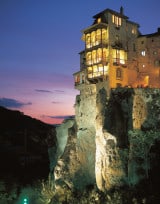
Cuenca’s hanging houses
It is impossible to encapsulate Cuenca in words. It really has to be seen to be believed. Built by the Moors, this defensive position at the heart of the Caliphate of Cordoba is a well-preserved medieval fortified city, which despite being steeped in ancient history, is still occupied by modern dwellers today.
Conquered by the Castilians in the 12th century, it is not only blessed with important buildings, such as Spain’s first Gothic cathedral, and the famous casas colgadas (hanging houses) – suspended from sheer cliffs overlooking the Huécar river – it is also home to an impressive modern art scene in Spain.
More than 1,000 metres high in the mountains, Cuenca has an impressive heritage but it also has an exciting cultural dimension. The Museo de Arte Abstracto exhibits modern art at its best and settles easily in against the backdrop of the antiquated hanging houses. Cuenca’s Museo Fundación Antonio Pérez Cuenca is a refreshing and delightful place to visit. A former 17th century convent, it features work from internationally acclaimed artists such as Zobel, Chilida, Torner and Warhol, and has been painstakingly collected by Antonio Perez, himself an artist and designer. A chance meeting with Antonio himself added to the experience as we departed Cuenca for Madrid.
Madrid mayhem
A city within a city, Madrid has the best theatres, exhibitions, museums and heritage sites that one comes to expect from a capital. But aside from its culture, food and historical wonders, Madrid has by far the liveliest social scene in Spain. Whether it’s a football frenzy at the Estadio Santiago Bernabéu, a retail extravaganza along the many shopped-lined avenues, an art, culture or literary tour, or maybe taking in the city via your taste buds; whatever your tipple, this awesome city knows how to entice, captivate and tantalise the willing traveller.
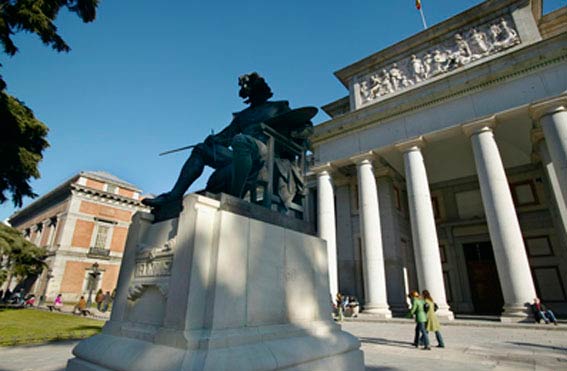
Museo Nacional del Prado, Madrid
If history and traditional food is your thing, then Lhardy, established in 1839, is worth a visit. Madrid’s first restaurant not only serves time-honoured food in an age-old tradition, it is also uniquely situated in a hip and ‘buzzy’ part of the city.
A guided tour to the Palacio de Cibeles; the Literary Quarter; the Madrid de los Austrias; and the Paseo del Prado will keep visitors busy and whether soaking up the impressive art collections as the Thyssen Museum, the Museo Nacional Centro de Arte, The National Archaeological Museum or the Museo del Prado, the variety of things to do in Madrid is both inspiring and overwhelming.
Getting back
My whistle stop tour from central Spain to the east coast and back again was bright and breezy and only took five days. Yet we managed to take in three amazing and unique cities, and visited more galleries, cathedrals, nature, science exhibitions and tours while enjoying the finest gastronomy and dinning experiences. This trip reaffirmed what I already knew – Spain has so much to offer and no matter where you go or what you visit, you will never have the same experience twice.
Although the AVE makes it a lot easier to get around and see so much, you won’t get to experience all the magic and wonders of this enchanting country in five days. And so it looks like I will have to return again and again in order to satisfy my insatiable Spanish hunger. Is that greedy of me? I prefer to think of it as being zealously keen and inquisitive!
AVE cities network
 The fastest, cheapest and most convenient way to get around Spain is with the Spain Pass service from Renfe which can be purchased online.
The fastest, cheapest and most convenient way to get around Spain is with the Spain Pass service from Renfe which can be purchased online.
We visited three cities, but the Ave Cities Network is formed by Antequera, Barcelona, Calatayud, Ciudad Real, Córdoba, Cuenca, Lleida, Madrid, Málaga, Ourense, Puertollano, Segovia, Sevilla, Tarragona, Toledo, Valencia, Valladolid and Villena y Zaragoza.
With Renfe Spain Pass you can travel throughout the country, choosing up to six months in advance the number of journeys you want to buy (4, 6, 8, 10 or 12), the class of your tickets (business or tourist class) and whether for adults or children.
The Avexperience makes seeing Spain’s main cities, history, culture, gastronomy and folklore very easy. A new flexible and customised way of travelling, the Avexperience allows you to adapt the dates and timetables of each of your journeys.
Access all areas
The Renfe Spain Pass allows you to pick the number of journeys:
- 4 journeys in one month: €163 or €229 business class
- 6 journeys in one month: €234 or €236 business class
- 8 journeys in one month: €295 or €413
- 10 journeys in one month: €346 or €484
- 12 journeys in one month: €392 or €550.
